The Steelseries Rival 600 is an absolutely fantastic mouse packing a ton of features for a very reasonable price.
The shape is unfamiliar to anyone coming from an ergo righty Logitech or Razer mouse, but once accustomed the Rival 600 controls fantastically. The Rival 600 can be had often for under 70 bucks, and for that price the value puts it ahead of its competitors given how much there is to this mouse.
Verdict
While wireless gaming mice are getting really good, they come at a much higher cost, for our dollar, the Rival 600 performs just as well any of those mice.
If you have a medium to large right hand, prefer to play in claw or fingertip grip, give this mouse a look, no question. For people outside of those parameters, this mouse is still very solid, it doesn’t have any awkward length issues like the G903 because it’s still a great ergonomic shape.
Pros
- Flawless sensor: TrueMove3
- Flexible cable
- Good weight consider the tech and size: 96 grams
- Great shape for right handed use
- Premium materials and comfort
- Good weight system
- Attractive RGB
- Good software
Cons
- Side grips may be too grippy, some reports of the grips deteriorating
- Superfluous second lift off sensor, added cost for no real extra benefit
Rival 600 Comparisons
Rival 600 vs Rival 650
The Rival 650 is simply the wireless version of the Rival 600, it features all the same materials, shape and buttons as the 600 but without the wire required. The battery on the 650 adds a lot of weight, the 650 weighs 121 grams compared to the 96 grams of the Rival 600. The trade off and price increase of the Rival 650 make it hard to justify.
Rival 600 vs Logitech G502
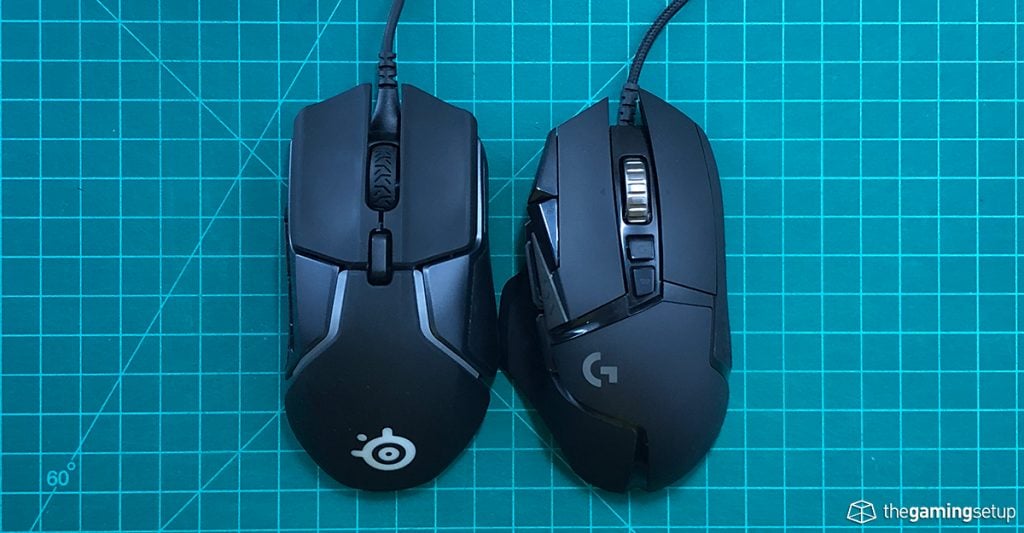
I’d pick the Rival 600 over the G502. I’d consider both their shape and size a wash, both mice have good ergonomic shapes for large hands.
The Rival has a bunch of advantages over the G502, the Rival 600 is much lighter, it has a significantly more flexible cable, and generally better buttons.
These mice basically serve the exact hand size and type of gamer. In terms of comfort I find them both pretty close.
Rival 600 vs Logitech G703
This is a close one. Both mice serve large hand gamers, both have strong reputations and good shapes.
Both mice are large ergonomic mice. I’d say the G703 feels a little larger, the slope and the hump make it feel more pronounced in the palm.
They both have great buttons, perfect sensors, and good scroll wheels.
Both of these mice feel premium with grippy sides and good plastics, although the Rival 600 has reported issues of quality control, so I’d say the G703 has the advantage here when factoring in the Logitech warranty.
The G703 is wireless, the Rival 600 has a great cable, they’re both nimble mice considering
I’d take the G703 for a couple of bucks more over the Rival 600.
Rival 600 vs Razer DeathAdder Elite
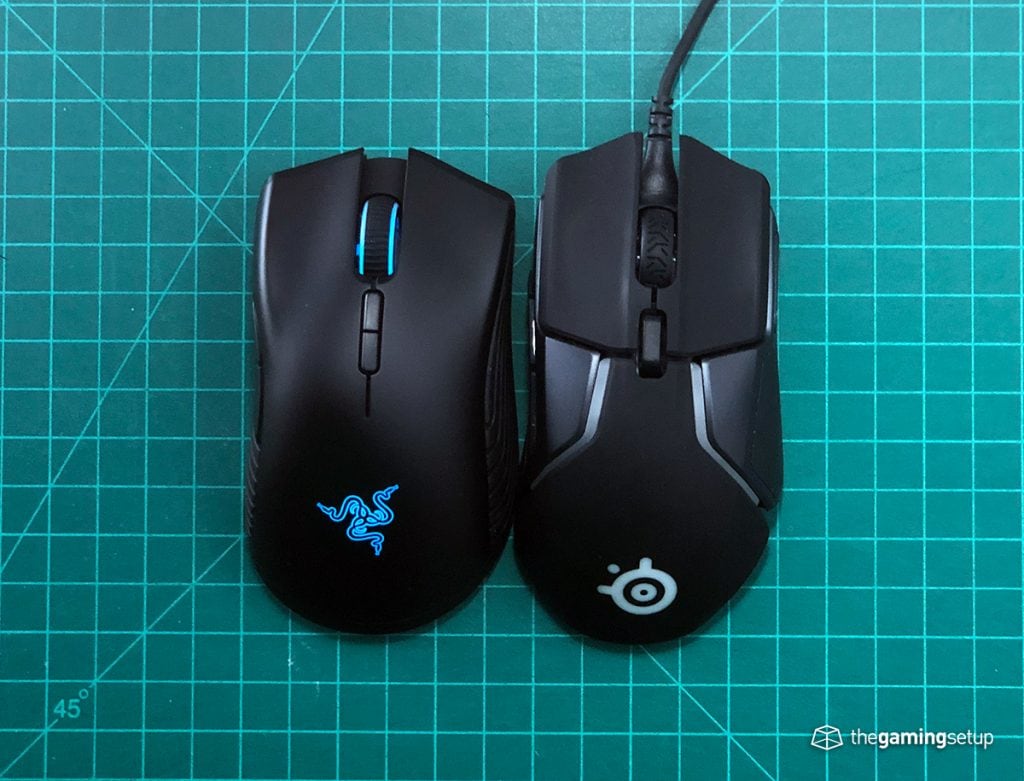
The Rival 600 and DeathAdder are very close competitors in the medium to large righty ergonomic mouse category.
Overall, the Rival 600 is a much better overall package than the DeathAdder, better materials, better buttons, better RGB, lighter in weight, and a slightly better cable to name a few things.
The only reason you should consider a DeathAdder over the Rival 600 is if you know for sure you prefer the DeathAdder shape.
Rival 600 vs Rival 310
These Steelseries mice have some similarities, both are ergonomic mice with the Rival 600 being larger than the Rival 310.
In terms of pure performance, both these mice are stellar, they have flawless sensors, good shapes, soft cables and good buttons.
The Rival 600 costs a lot more than the Rival 310, that extra price really only bring a few niceties that don’t really benefit gameplay. Things such as weights, removable cable and a second sensor.
I’d pick the the Rival 310 over the 600, as long as the size is right for your hand.
Rival 600 vs Zowie S1 & S2
The Steelseries Rival 600 is a bit larger than the Zowie S1 so your hand size is a bit of a factor when choosing between these two mice.
The S1 is more comfortable than the Rival 600 with a better cable and it’s lighter, the S1 is likely going to be a better in-game performer.
The S1 scroll wheel is awful, the Rival 600 wheel blows it out of the water.
Overall, I’d choose the S1 over the Rival 600 as long as the size works.
Build & Shape
The Rival 600 is a medium/large mouse with a long length, compared to the G703, the Rival has a shorter hump making it lean more towards a claw and fingertip grip, that being said, playing in palm grip was doable, it just took a bit longer to get used to for me.
The Rival 600 measurement specs are:
- Length: 13.1 cm
- Width: 6.2 cm (front) to 6.9 cm (back)
- Height: 4.3 cm at the back
This mouse is longer than the G703 with a lower middle hump, with a slightly slimmer width. The side grips are coated with grippy rubber to assist in mouse pick up, which is required, the Rival 600 sides are slightly curved but not to the extent of some other mice, I’ve noticed have to grip a little hard to pick up the mouse compared to some other mice, but it’s nothing major.
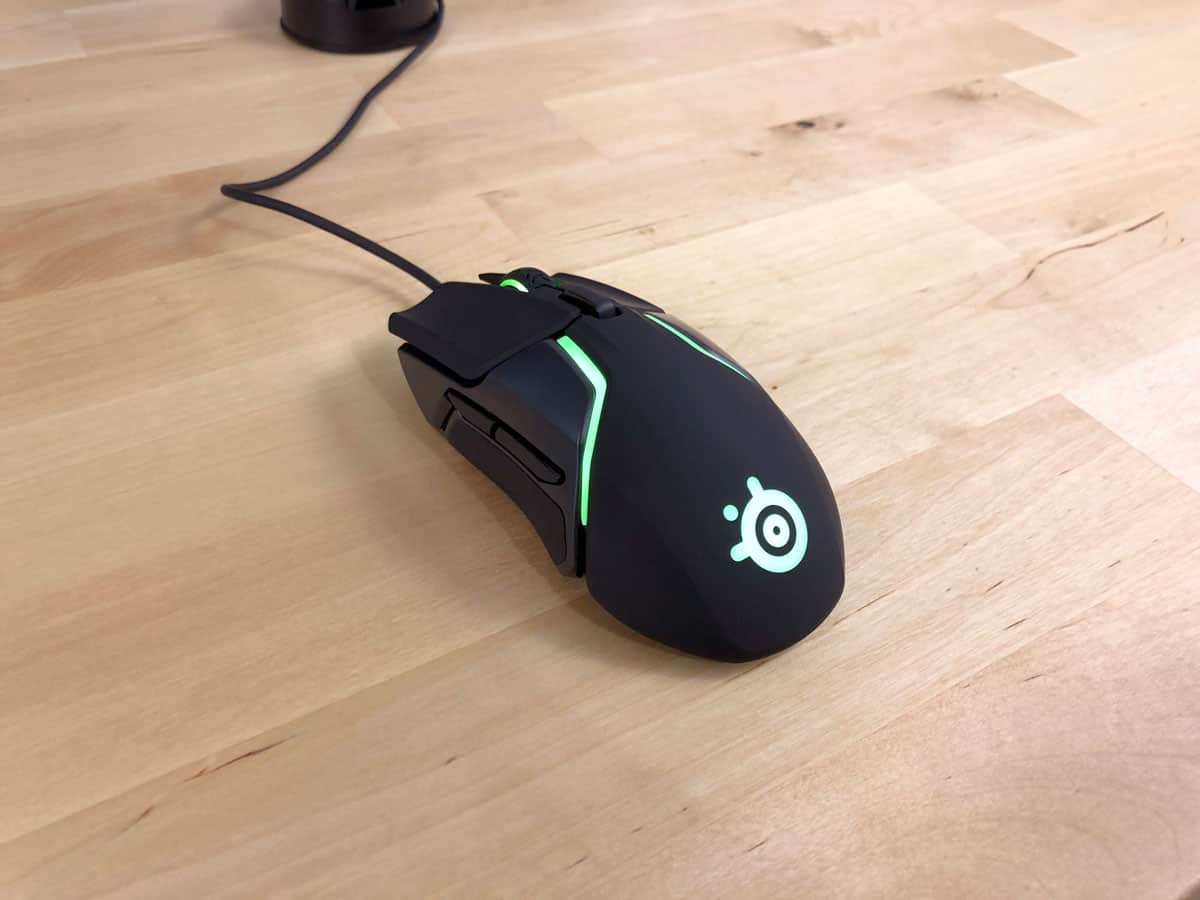
The top of the mouse is coated in a black soft touch material, the mouse feels premium, the coating doesn’t seem to attract fingerprints and feels good in the hand despite some intensely sweaty gaming sessions (damn you summer).
The Rival 600 shows no obvious rattles or creaks when tapped or shaken, the scroll wheel is firmly place as well showing no rattle.
On the bottom of the mouse you’ll find 3 feet, 1 large pad in the front and two in the back, the feet perform well providing smooth glide even on a control Zowie G-SR pad.
Sensor & Performance
The Rival 600 weighs in at 96 grams without weights, not the lightest mouse available but pretty good for a larger size mouse. The mouse packs a Steelseries proprietary TrueMove 3 Optical Gaming Sensor, which is still a Pixart sensor, that performs similarly to the flawless PMW3360, the TrueMove version however has a larger effective DPI range for input, with less jitter. All of this means that this mouse will perform at high DPIs, so if you love high DPIs this mouse might be for you.
The Steelseries Rival 600 actually packs a second sensor that helps the mouse detects the depth of a surface for better lift off distance accuracy. It’s a great bonus feature and we applaud Steelseries for trying to innovate in mouse design. It’s hard to tell the impact of the second sensor in real world scenarios, I haven’t had any issues with lift off distance tracking in other top tier mice.

The rubber cord is light and flexible, thin enough to fit all mouse bungees, I don’t really feel any drag or bunch when playing with this mouse.
Overall, the Steelseries Rival 600 is a performer, combining a great shape, flawless sensors and a reasonably light weight, I haven’t had any issues performing in high twitch games like Overwatch or tracking long distance opponents in games like Fortnite.
Buttons & Scroll Wheel
The Rival 600 has 6 buttons with 1 dpi switch button that can be mapped to other functions. The 3 side buttons only live on the left side of the mouse, this mouse is made for right handers. The 3rd side button is located in front of the side buttons and can be programmed to execute macros, toggle DPI or whatever you wish, the placement of the button is a little awkward though considering how long the mouse is, I didn’t get any use out of it.
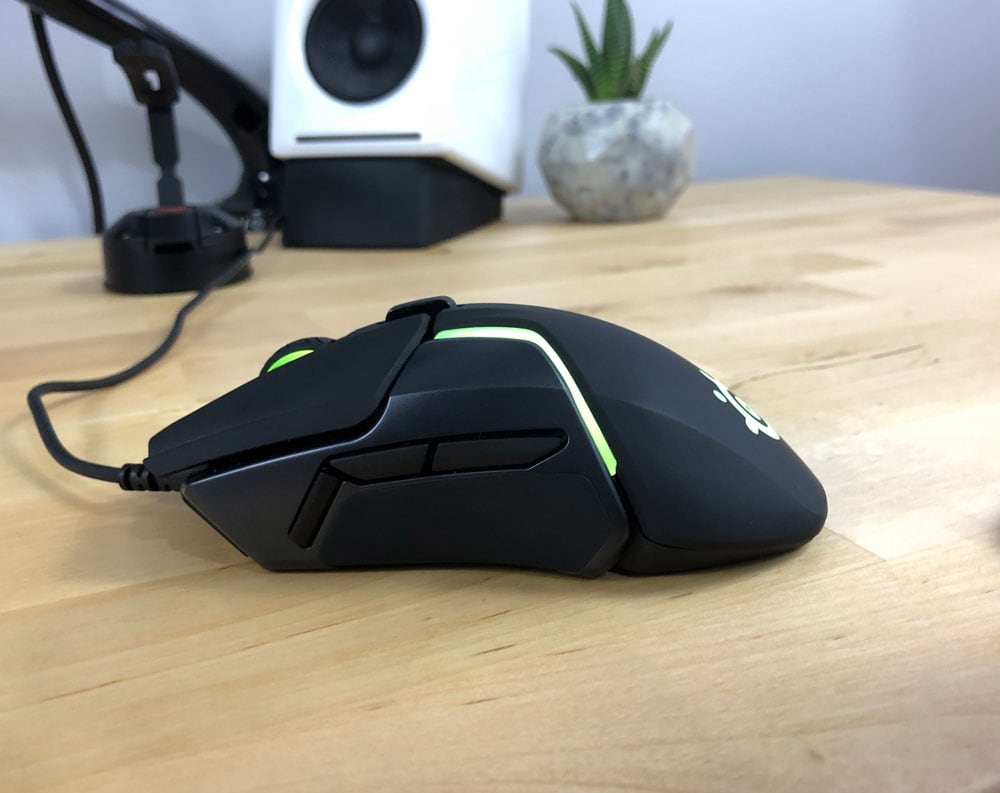
The clicks on this mouse are a dream, super tactile, not too soft, not too stiff with a satisfying consistent response on both the left and right buttons. The only other mouse that has clicks as good as the Rival 600 are the Logitech G Pro/G305s.
The button switches seem to be Steelseries own brandm, rated for 60 million clicks which is more 10 million clicks more durable than a standard Omron switch, I’m a major fan.
The clicks on the non primary buttons are good, the scroll wheel clicks solidly with great tactile feedback. The scroll steps are distinct and provide good response while producing minimal noise.
The side buttons have thin profile, but are and separated enough from each other that I didn’t have any problems locating and distinguishing the side buttons from each other.
The buttons here don’t let the mouse down, tracking and clicks are all top notch on the Rival 600
Features & Software
The Steelseries software Game Engine is fairly robust, it’s as good as Logitech’s software for functionality but I think it actually does a better job of being a lightweight application and having more intuitive UX.
The Steelseries software has these features:
- RGB lighting settings including add-on PrismSync options
- DPI/CPI stepping
- Polling Rate
- Acceleration
- Angle Snapping
- Saved profiles on the mouse
- Button remapping
- Macro recording
The RGB on the Rival 600 is the best we’ve come across, with multiple individual zones, you’re allowed to do a lot of funky combinations on top of the standard colour wave settings.
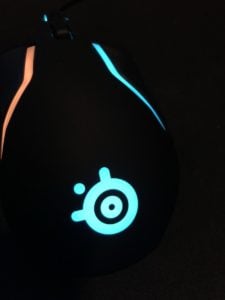
The Rival 600 also has an onboard memory chip allowing for all illumination profiles and settings to be saved on the mouse.
Steelseries has packed a lot of very nice to haves like the lift off sensor, onboard memory and a best-in-class RGB for a very reasonable price.
Warranty & Reliability
Steelseries warranty policy is standard:
Your warranty will only cover manufacturing defects. It does not cover regular wear and tear, including but not limited to, breakage due to abuse, cosmetic damage, dents and chips, improper usage, water damage, or other causes attributable to events outside the manufacturing process.
US and Asia: 1 year warranty on all products.
EU: 2 year warranty on all products.
All products are covered by local warranty regulations.
See Steelseries warranty here.
Looking around the internet for issues, the most common complaint is that the silicon grips are poorly glued on, Steelseries will replace the mouse if that becomes an issue, the grips on the mouse that we purchased are stuck on there really good.
Update: The glue has started to come out of the grips, pray for my sticky hands
Update #2: Steelseries has honoured their warranty and sent replacement side panels, so far the glue on them has been solid.
Tech Specs
Dimensions
- Length: 13.1 cm
- Width: 6.2 cm
- Height: 4.3 cm
- Shape: Ergonomic
- Weight: 96 grams
- Cable: 2 metres, rubber, removable
Tech
- Sensor: TrueMove3 + Lift off sensor
- Buttons: Steelseries switches
- Polling Rate: 125 Hz to 1000 Hz
- DPI: 200 to 12,009
- Buttons: 6 + DPI switcher
- Software: SteelSeries Engine 3
- Connectivity: Wired

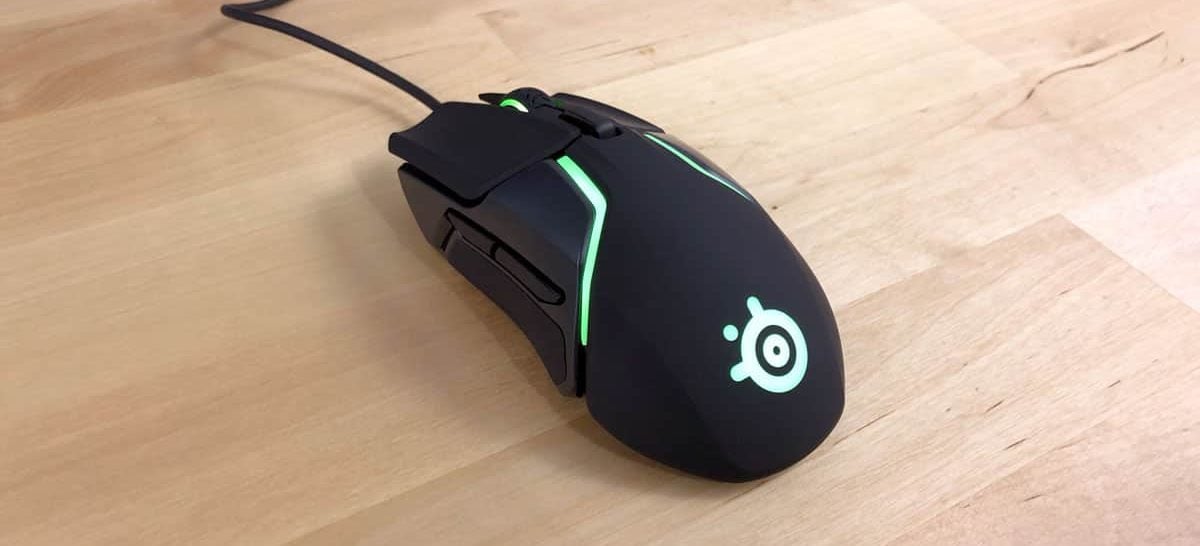

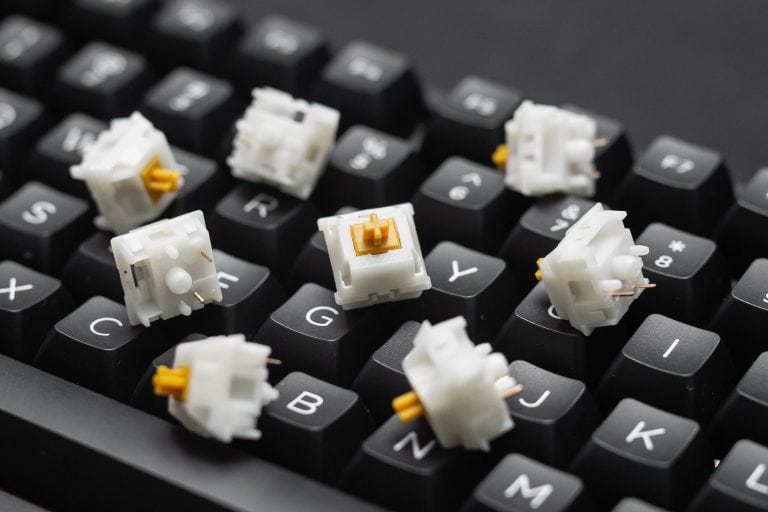
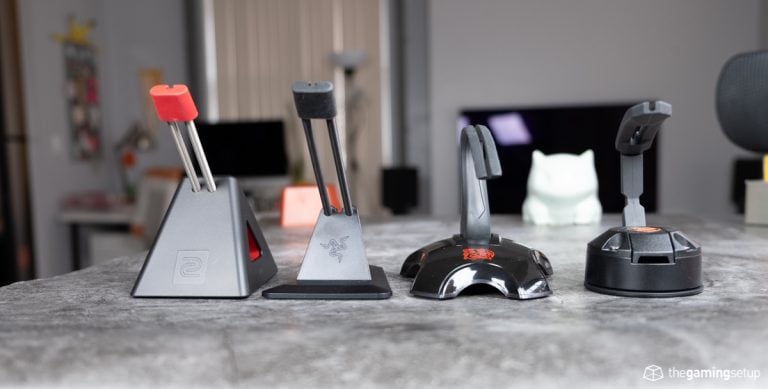
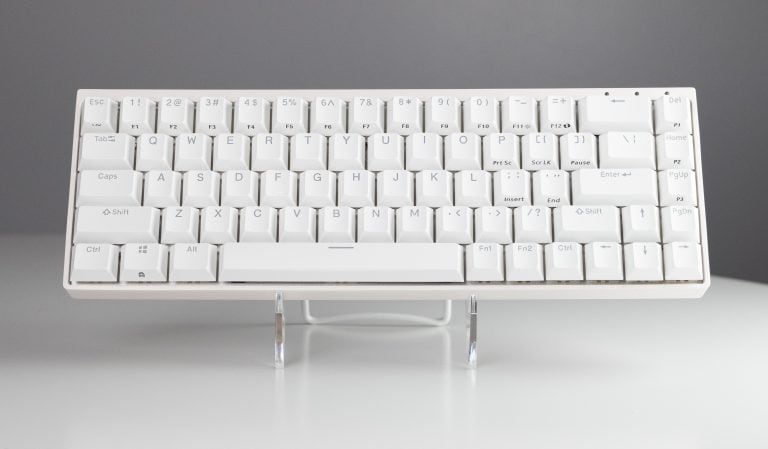
2 Responses
Well, Bad for me because retailer on my country doesn’t have replacement side grip like on the US.
If the side grips do fall off I heard superglue will do a great job to make it stick permanently 🙂